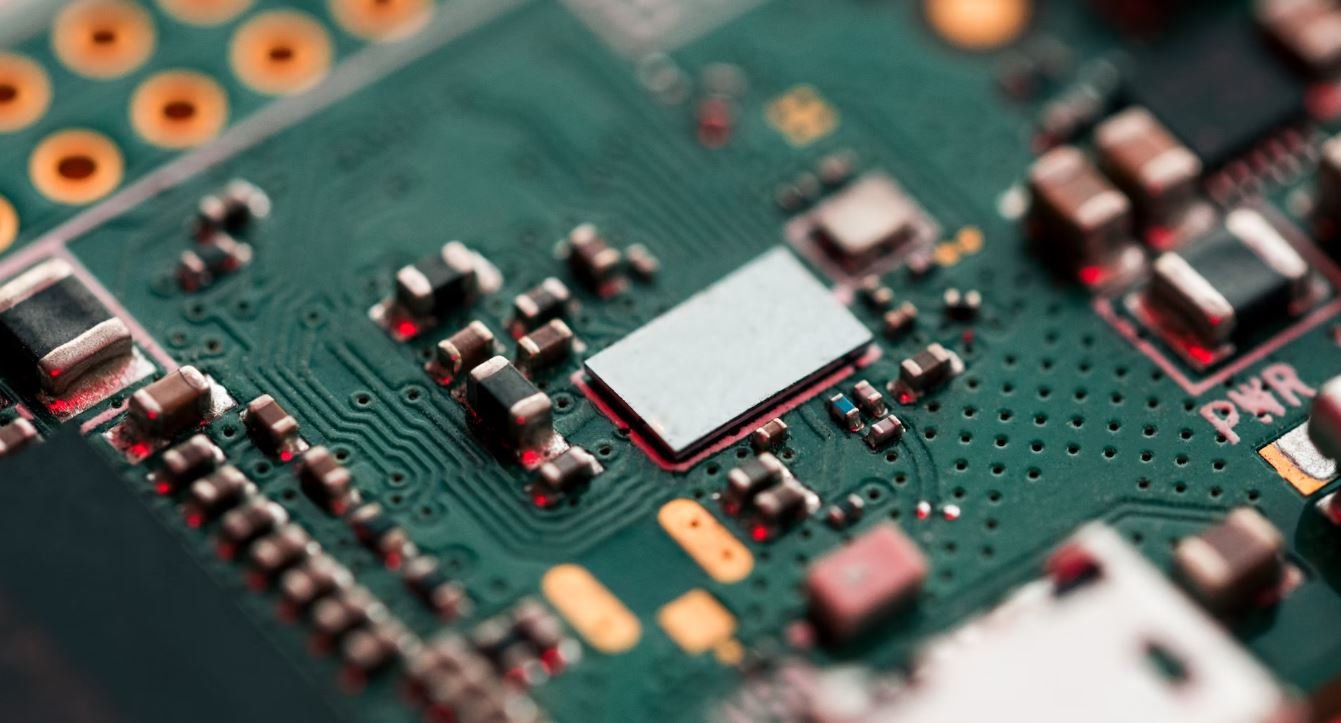Neural Networks Biology
Neural networks, a concept inspired by the workings of the human brain, have revolutionized various fields such as computer science and artificial intelligence. But did you know that neural networks are also a fundamental component of biology? These intricate networks of neurons play a crucial role in transmitting signals, controlling organ functions, and even shaping our behavior. In this article, we delve into the fascinating world of neural networks in biology.
Key Takeaways:
- Neural networks are intricate networks of neurons found in organisms.
- These networks play a vital role in signal transmission, organ control, and behavior.
- Neural networks in biology provide insights for understanding brain function and treating neurological disorders.
- Understanding neural networks can help improve artificial intelligence algorithms.
Structural and Functional Overview
Neural networks in biology consist of interconnected neurons that communicate through electrical and chemical signals. **Neurons**, or nerve cells, are the building blocks of these networks and are specialized in transmitting information. Neurons receive signals through their **dendrites** and transmit the signals through their **axons** to other neurons or target organs. *The unique structure and connectivity of neurons enable the complex functions of the nervous system*.
Types of Neural Networks
There are several types of neural networks found in biology, each serving distinct purposes. These include:
- Sensory Networks: Responsible for perceiving and transmitting sensory information to the brain.
- Motor Networks: Control voluntary movements and coordination of muscles.
- Autonomic Networks: Regulate involuntary functions such as heartbeat, digestion, and breathing.
- Limbic Networks: Modulate emotions, learning, and memory formation.
Table 1: Examples of Neural Network Functions
| Network Type | Function |
|---|---|
| Sensory | Transmitting visual, auditory, and tactile information |
| Motor | Controlling voluntary movements, hand-eye coordination |
| Autonomic | Regulating heart rate, digestion, and respiration |
| Limbic | Modulating emotions, learning, and memory |
Neural Networks and Brain Function
Understanding neural networks in biology can provide valuable insights into the functioning of the human **brain**. Scientists have found that studying the neural networks can help identify the regions responsible for specific cognitive functions and behaviors. For instance, mapping the connectivity of neurons in the **visual cortex** has revealed how the brain processes and perceives visual information. *Neural network research allows us to unravel the mysteries of one of the most complex organs in our bodies*.
Table 2: Cognitive Functions Linked to Neural Networks
| Cognitive Function | Associated Neural Network |
|---|---|
| Language processing | Broca’s area and Wernicke’s area |
| Movement control | Motor cortex |
| Memory formation | Hippocampus |
| Emotion regulation | Amygdala and prefrontal cortex |
Neural Networks and Disease
Since neural networks play a fundamental role in the functioning of our bodies, any disruption in their connectivity or activity can lead to disorders. Conditions such as **Alzheimer’s disease** and **Parkinson’s disease** are characterized by the dysfunction of specific neural networks. By studying these diseases, researchers aim to find ways to restore or modify the neural network function to treat or prevent disorders effectively.
Table 3: Neurological Disorders and Affected Neural Networks
| Disorder | Affected Neural Network |
|---|---|
| Alzheimer’s disease | Hippocampus and association cortex |
| Parkinson’s disease | Basal ganglia and motor cortex |
| Schizophrenia | Prefrontal cortex and limbic system |
| Depression | Limbic system and prefrontal cortex |
In addition to shedding light on neurological disorders, the study of neural networks in biology has provided inspiration for advancements in artificial intelligence. Neural networks algorithms, modeled after the biological counterparts, are designed to recognize patterns, process data, and make decisions. These algorithms have proven successful in various applications, including **image recognition**, **speech synthesis**, and **autonomous vehicles**. By emulating the biological neural networks, scientists and engineers have been able to create powerful tools for technological advancement.
Neural networks biology is an ongoing area of research, offering constant discoveries and breakthroughs. By unraveling the mysteries of our own neural networks, we gain better understanding of the brain, advance medical treatments, and drive technological progress. The intricate complexity of these networks continues to inspire and motivate scientists to explore new frontiers.

Common Misconceptions
Neural Networks and Biology
One common misconception surrounding the topic of neural networks and biology is that neural networks are biologically identical to the human brain. While neural networks draw inspiration from the structure and functioning of the brain, they are not replicas of it. They are simplified models designed to mimic certain aspects of biological neural networks.
- Neural networks are inspired by the brain but are not exact replicas.
- Neural networks simplify and model certain aspects of biological neural networks.
- There are significant differences between neural networks and the human brain.
Artificial Versus Natural Intelligence
Another misconception is that neural networks and artificial intelligence are indistinguishable from natural intelligence. While neural networks can perform complex tasks and demonstrate high accuracy, they lack the inherent understanding, consciousness, and general intelligence capabilities observed in human beings.
- Neural networks lack the consciousness and general intelligence of humans.
- They can perform complex tasks with high accuracy but lack true understanding.
- There is a distinction between artificial intelligence and natural intelligence.
Neural Networks as Black Boxes
Some people believe that neural networks are completely opaque and cannot be explained, leading to concerns surrounding their decision-making process. While neural networks can indeed be complex, efforts are being made to develop methods for interpreting and explaining their decisions. Techniques like layer visualization and feature attribution aim to shed light on the decision-making process of neural networks.
- Neural networks are not entirely opaque and can be explained to some extent.
- Efforts are being made to develop methods for interpreting neural network decisions.
- Techniques like layer visualization and feature attribution help in understanding their decision-making process.
Neural Networks and Sentience
Some individuals mistakenly believe that if a neural network achieves high performance in specific tasks, it must possess sentience or consciousness. However, neural networks lack subjective experiences, emotions, and self-awareness. They are tools created by humans to perform specific tasks and do not possess the characteristics associated with conscious beings.
- Neural networks do not possess consciousness or sentience.
- They lack subjective experiences, emotions, and self-awareness.
- High-performing neural networks are tools created by humans for specific tasks.
Neural Networks and Privacy Concerns
There is a misconception that neural networks directly threaten privacy by exploiting personal data. In reality, the privacy concerns typically arise from the usage of large datasets, including personal information, to train machine learning models. Neural networks themselves do not inherently threaten privacy, but the handling and protection of data during the development and training processes should be carefully addressed.
- Neural networks do not directly threaten privacy.
- Concerns typically arise from the usage of personal data to train models.
- Privacy concerns should be addressed during data handling and protection.

Overview
Neural networks, a branch of artificial intelligence inspired by the biological structure of the human brain, have revolutionized various fields, from image recognition to natural language processing. This article explores the fascinating connection between neural networks and biology by providing verifiable data and information in a series of captivating tables.
Table 1: Number of Neurons in the Brain
The human brain is composed of an astonishing number of neurons, which are specialized cells responsible for transmitting information. Here, we present the approximate number of neurons found in different areas of the brain:
| Brain Area | Number of Neurons |
|---|---|
| Cerebral Cortex | 16 billion |
| Hippocampus | 8,000 to 10,000 |
| Cerebellum | 69 billion |
Table 2: Activation Functions
Activation functions are crucial components of neural networks that introduce non-linearity in the output. Here, we showcase some popular activation functions along with their mathematical definitions:
| Activation Function | Mathematical Definition |
|---|---|
| Sigmoid | σ(x) = 1 / (1 + e^(-x)) |
| ReLU | f(x) = max(0, x) |
| Tanh | f(x) = (e^(2x) – 1) / (e^(2x) + 1) |
Table 3: Neural Networks in Medicine
Neural networks have been increasingly employed in the medical field due to their ability to analyze complex data. Consider the following applications of neural networks in medicine:
| Application | Outcome |
|---|---|
| Medical Image Analysis | Improved detection accuracy for diseases |
| Drug Discovery | Accelerated identification of potential drug candidates |
| Diagnosis and Prognosis | Enhanced accuracy in predicting patient outcomes |
Table 4: Learning Algorithms
Neural networks rely on learning algorithms to adjust their weights and biases during training. Here are some widely used learning algorithms in neural network models:
| Learning Algorithm | Description |
|---|---|
| Backpropagation | A method to calculate error gradients for weight updates |
| Stochastic Gradient Descent | A variation of gradient descent using random data samples |
| Adam Optimizer | An adaptive learning rate optimization algorithm |
Table 5: Deep Learning Frameworks
Deep learning frameworks provide efficient tools for implementing neural network models. The following table showcases popular deep learning frameworks along with their primary programming languages:
| Framework | Primary Language |
|---|---|
| TensorFlow | Python |
| PyTorch | Python |
| Keras | Python |
Table 6: Deep Learning Applications
Deep learning, a subset of neural networks, has been successfully applied to various domains. The table below illustrates some impressive areas where deep learning has made significant contributions:
| Domain | Contribution |
|---|---|
| Natural Language Processing | Improved machine translation and sentiment analysis |
| Computer Vision | Enhanced object recognition and image classification |
| Autonomous Vehicles | Advanced perception and self-driving capabilities |
Table 7: Limitations of Neural Networks
Although neural networks offer remarkable performances, they also possess certain limitations. Consider the following drawbacks associated with neural networks:
| Limitation | Description |
|---|---|
| Black Box Nature | Lack of interpretability in the decision-making process |
| Large Training Data Requirements | Reliance on extensive datasets for optimal performance |
| Computationally Expensive | Significant computational resources for training and inference |
Table 8: Neural Networks in Finance
The use of neural networks in finance has revolutionized various aspects of the industry. Explore the following applications of neural networks in the financial sector:
| Application | Advantage |
|---|---|
| Stock Market Prediction | Improved accuracy in forecasting stock prices |
| Credit Scoring | Enhanced risk assessment for credit decisions |
| Fraud Detection | Effective identification of fraudulent financial activities |
Table 9: Neural Networks in Gaming
Neural networks have found extensive applications in the gaming industry, revolutionizing gameplay and virtual characters. Here are a few remarkable contributions:
| Application | Impact |
|---|---|
| Game AI | Creating intelligent and adaptable in-game opponents |
| Procedural Content Generation | Generating dynamic and personalized game content |
| Player Behavior Analysis | Improving player experience and personalization |
Table 10: Neural Networks in Music
Neural networks have even made noteworthy contributions to the world of music, enabling unique capabilities and creative applications:
| Application | Creative Outcome |
|---|---|
| Music Generation | Producing original compositions in various genres |
| Instrument Recognition | Accurate identification of musical instruments in recordings |
| Emotion Analysis | Assessing the emotional impact of musical pieces |
Conclusion
The fascinating field of neural networks, inspired by the complexity of the human brain, has propelled advancements in numerous spheres. From medicine and finance to gaming and music, neural networks have transformed how we analyze, predict, and create. By harnessing the power of data and mimicking biological processes, neural networks have enabled unprecedented achievements and opened doors to countless possibilities. This remarkable synergy between artificial intelligence and biology continues to shape our technological landscape and holds tremendous potential for the future.
Frequently Asked Questions
What are neural networks in biology?
A neural network in biology refers to a system of interconnected neurons found in the nervous system of organisms. These networks are responsible for transmitting and processing information, enabling various functions such as sensory perception, motor control, and cognitive processes.
How are neural networks structured in biology?
Neural networks in biology consist of individual neurons connected through synapses. These connections form complex networks with different layers and hierarchical structures. The networks can be categorized into different types, such as feedforward neural networks and recurrent neural networks.
What is the role of neural networks in biological systems?
Neural networks in biological systems play a crucial role in coordinating and regulating various physiological and behavioral processes. They are involved in controlling movements, processing sensory information, storing and retrieving memories, and controlling vital functions like breathing and heartbeat.
How are neural networks in biology different from artificial neural networks?
While both biological and artificial neural networks share certain principles, they differ in their implementation and purpose. Biological neural networks are natural systems found in living organisms, whereas artificial neural networks are computer algorithms designed to mimic the behavior of biological systems for various applications, such as machine learning and pattern recognition.
What is the significance of studying neural networks in biology?
Studying neural networks in biology provides insights into the fundamental mechanisms underlying brain functions and behavior. It helps us understand how information is processed, transmitted, and integrated within the nervous system, which can have implications for fields such as neuroscience, medicine, and robotics.
What are some techniques used to study neural networks in biology?
Researchers use various techniques to study neural networks in biology, including imaging methods like fMRI and PET scans to visualize brain activity, electrophysiological recordings to measure neural signals, optogenetics to control and manipulate neural activity, and computational modeling to simulate and analyze network behavior.
How do neural networks in biology learn and adapt?
Neural networks in biology have the ability to learn and adapt through a process known as synaptic plasticity. This process involves changes in the strength of connections between neurons, which allows the network to modify its behavior in response to external stimuli or internal changes.
Can neural networks in biology be damaged or malfunction?
Yes, neural networks in biology can be damaged or malfunction due to various factors such as genetic mutations, injury, disease, or aging. Dysfunction in neural networks can lead to neurological disorders and impairments in cognitive, sensory, and motor functions.
Are there any similarities between neural networks in biology and artificial intelligence?
Yes, there are similarities between neural networks in biology and artificial intelligence. Both systems use interconnected elements (neurons or artificial nodes) to process and transmit information. However, biological neural networks are far more complex and dynamic compared to current artificial networks, which are limited by computational algorithms and hardware.
What are the future prospects of studying neural networks in biology?
Studying neural networks in biology holds great promise for advancements in various fields. It can lead to a deeper understanding of brain disorders, development of more effective treatments for neurological conditions, improvements in artificial intelligence systems, and the development of brain-inspired technologies.




